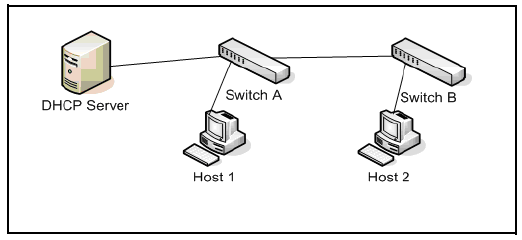Trusted ports
Similar to DHCP snooping, dynamic Address Resolution Protocol (ARP) protection allows you to configure VLAN interfaces in two categories: trusted and untrusted ports. ARP packets received on trusted ports are forwarded without validation.
The switch intercepts all ARP requests and responses on the port.
Each intercepted packet is checked to see if its IP-to-MAC binding is valid. If a binding is invalid, the switch drops the packet.
In contrast, if Switch A does not support dynamic ARP protection and you configure the port on Switch B connected to Switch A as trusted, Switch B opens itself to possible ARP poisoning from hosts attached to Switch A.

Configure ports connected to other switches in the network as trusted ports. In this way, all network switches can exchange ARP packets and update their ARP caches with valid information.
Switches that do not support dynamic ARP protection must be separated by a router in their own Layer 2 domain. Because ARP packets do not cross Layer 3 domains, the unprotected switches cannot unknowingly accept ARP packets from an attacker and forward them to protected switches through trusted ports.